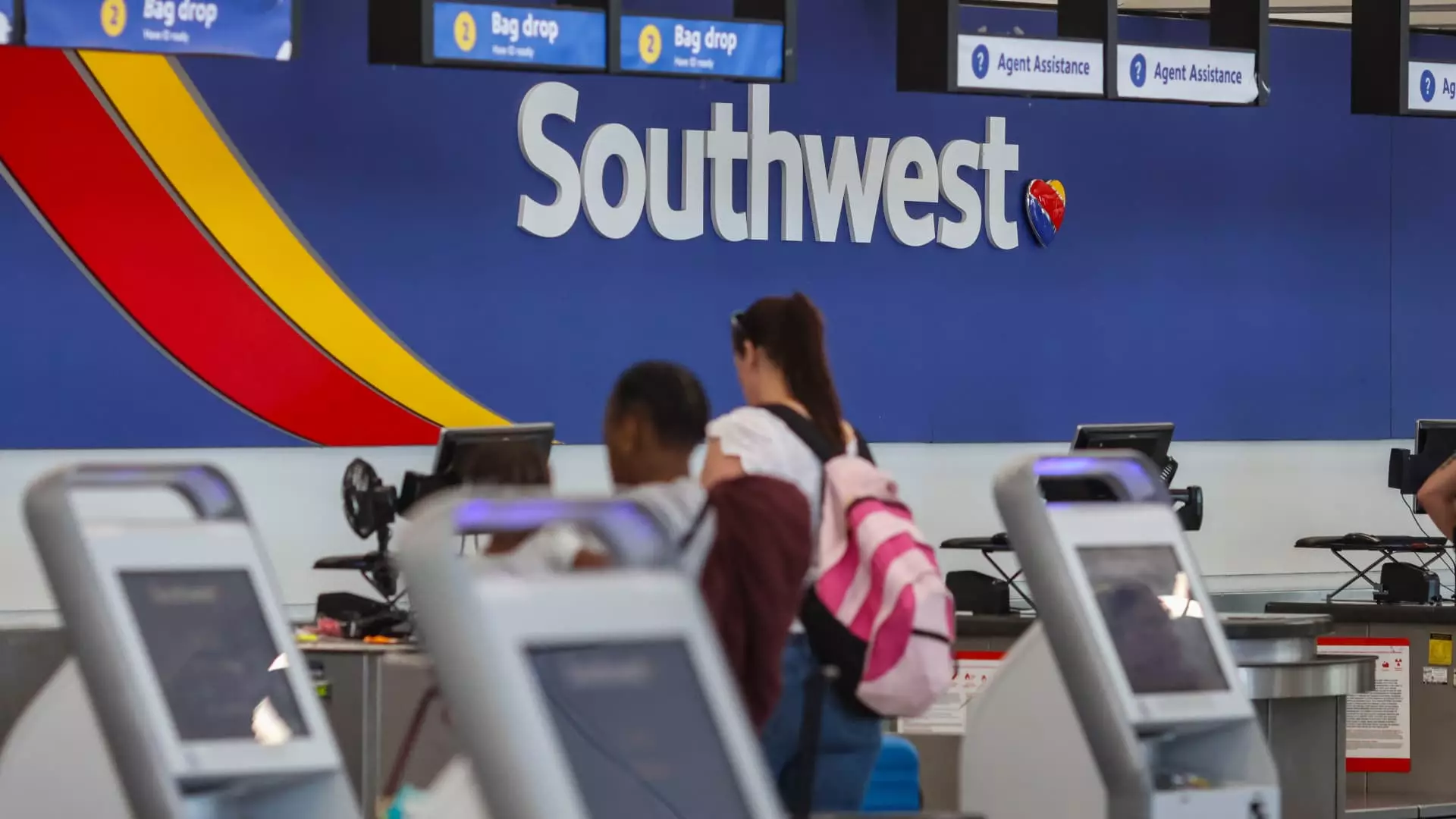In a significant move signaling financial recalibration, Southwest Airlines is poised to cut services to and from Atlanta, the bustling airport that holds the title of the world’s busiest. A recent internal memo obtained by CNBC indicates that the airline will eliminate over 300 positions, comprising approximately 200 flight attendants and 140 pilots. This decision comes just before an investor meeting that is anticipated to lay out strategic plans aimed at cost reductions and revenue enhancements. The ongoing pressures exerted by activist investors like Elliott Investment Management seem to have played a crucial role in shaping this reconfiguration of service.
Notably, Southwest Airlines has confirmed that it will not completely withdraw from Atlanta nor will it shutter its crew base there. Instead, affected staff will not face layoffs but will be required to seek positions in other locations. The company is adjusting its operational footprint, reducing the number of gates in Atlanta from 18 to 11 while also trimming routes from 37 to only 21 by April 2025. This pivot raises questions about the airline’s long-term strategy and underscores the broader challenges it faces in a fiercely competitive aviation market.
This contraction in service comes against the backdrop of heightened market scrutiny and the necessity for fiscal responsibility. Southwest acknowledges that the decision is rooted in the need to restore profitability amid what they describe as “continued losses.” The company’s memo emphasizes that the reductions are not a judgment on employee performance, expressing pride in the high service standards maintained by its personnel. Still, the underlying message is clear: cost containment is non-negotiable in the current economic climate.
On the same day the cutbacks were announced, Southwest expanded its ticket sales through summer 2025, simultaneously revealing plans to increase its service offerings in other profitable markets. This strategic shift includes augmented flights to Nashville, Tennessee, and the introduction of overnight services to and from Hawaii. Southwest’s leadership is evidently committed to maximizing revenue opportunities by adjusting its flight network to better align with customer demand.
Southwest is not alone in navigating the turbulent waters of the aviation industry. The sector has been wrestling with changing consumer behavior, exacerbated by the impacts of the COVID-19 pandemic. The airline’s operational decisions reflect a broader trend of optimizing existing services while withdrawing from less profitable routes. As it restructuring efforts unfold, the challenges of managing scheduling, aircraft availability, and route efficacy become ever more complex.
Moreover, delays tied to the delivery of Boeing’s 737 Max 7 aircraft have compounded operational setbacks, further constraining the airline’s capacity to meet demand. As such, Southwest’s executives are voicing the need for “difficult decisions” as they strive for profitability in an environment characterized by oversupply in some markets and fluctuating consumer preferences.
The operational changes do not only reflect corporate restructuring but also carry implications for customer experience. Adjustments to seating arrangements, including the recently announced introduction of extra legroom and a shift away from open seating, signal a significant evolution in Southwest’s service model. For customers, these developments could herald more comfort and options, but the reduced presence in Atlanta may leave many frequent flyers reassessing their travel choices.
As the company endeavors to find a balance between financial health and customer satisfaction, the path forward is fraught with uncertainty. The decision to cut back in Atlanta, coupled with the expansions in other markets, illustrates the dual focus on consolidation and growth that Southwest is navigating.
As Southwest Airlines embarks on this new chapter, the eyes of the industry remain firmly fixed on its ability to emerge from these operational shifts with renewed strength. The response to evolving market dynamics, while safeguarding the interests of its workforce and its loyal customer base, will be pivotal in determining the airline’s trajectory. As broader economic conditions continue to change, the strategic decisions made today will undoubtedly shape the future for Southwest Airlines in the competitive aviation landscape.

